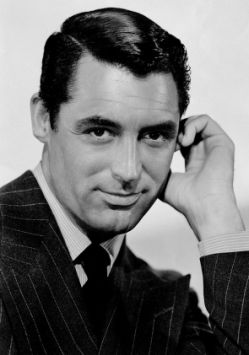 I’ve written before that Humphrey Bogart is the greatest film star of all time. That makes Cary Grant the second greatest. This ultimate romantic leading-man doesn’t have the insane number of masterpieces under his belt that Bogart does, but he has multiple. And as far as generally good films go, he’s got more than Bogart, and probably more than any leading-actor. Grant being in a film is a good indicator that it will be enjoyable. Yes, there were a few true duds, but for every Night and Day, there were a few like My Favorite Wife, The Awful Truth, Gunga Din, and I Was a Male War Bride that you should watch. It would be easy to fill in a much longer list of “must see” Grant films, but the challenge is to choose only eight, so I’ve stuck to that for him.
I’ve written before that Humphrey Bogart is the greatest film star of all time. That makes Cary Grant the second greatest. This ultimate romantic leading-man doesn’t have the insane number of masterpieces under his belt that Bogart does, but he has multiple. And as far as generally good films go, he’s got more than Bogart, and probably more than any leading-actor. Grant being in a film is a good indicator that it will be enjoyable. Yes, there were a few true duds, but for every Night and Day, there were a few like My Favorite Wife, The Awful Truth, Gunga Din, and I Was a Male War Bride that you should watch. It would be easy to fill in a much longer list of “must see” Grant films, but the challenge is to choose only eight, so I’ve stuck to that for him.
Honorable mentions go to films that would make it on other actors’ lists (and did, with several of these already on best lists I made for other actors), but can’t fit on Grant’s because he has so many good films: Bringing Up Baby (1938) [on the Katherine Hepburn list], The Bishop’s Wife (1947), The Bachelor and the Bobby-Soxer (1947), and Topper (1937).
8 – Charade (1963) – Audrey Hepburn is the window of a murdered man mixed up in a very Hitchockian mystery. There’s plenty of romance, humor, thievery, and killing. Grant may be a crook, may be a murderer, or may be a hero. [Also on the Audrey Hepburn list and the Walter Matthau list]
7 – To Catch a Thief (1955) – This is a light Hitchcock thriller and perfect as part of a double feature with Charade. Grant is an ex-jewel thief who needs to clear his name. Grace Kelly is the daughter of a woman with a lot of jewels.
6 – Arsenic and Old Lace (1944) – Another great one for Halloween. Grant plays a theater critic who discovers that his family is filled with psychopaths. The play is wonderful and this is an excellent rendition.
5 – Holiday (1938) – Often overlooked, this Grant & Katherine Hepburn romantic comedy has always been a favorite of mine. Grant plays a vunderkin whose set to marry the good sister of a high society family, but he wants more than money which doesn’t go over well with the family, except for black sheep Hepburn. This is where you go if you want depth and philosophy with your comedy. [Also on the Katherine Hepburn list]
4 – His Girl Friday (1940) – Who’d have thought gender-swapping one of the leads in a dramady newspaper play would produce this brilliant work. It has all the meaning and fun of the original, and extra layers of romance and feminism. It is extremely fast paced and very funny.
3 – North by Northwest (1959) – Grant in one of the greatest action thrillers, and the second of three Hitchcock films on this list. I suspect anyone reading this already knows this film. If not, go see it now.
2 – Notorious (1946) – A darker Grant and a darker thriller, once again directed by Hitchcock. It’s spies and cruelty and self-loathing and love and it is remarkably moving. Co-stars Ingrid Bergman and Claude Rains.
1 – The Philadelphia Story (1940) – Just as it topped Katherine Hepburn’s list, so it tops this one. This is the essential romcom, and was the perfect vehicle for its three leads, Grant, Katherine Hepburn, and Jimmy Stewart. None of them ever had a role that more completely played to their strengths. This is as witty as film gets. [Also on the Katherine Hepburn list and the James Stewart list]
Back to all Best Films By The Great Actors Lists
 In old Hollywood, that sold the appearance of sophistication, Powell was the sophisticate’s sophisticate. No one was smoother. He was class personified. I like him in any movie, even when the movie is not so good. No matter the part, Powell made it better.
In old Hollywood, that sold the appearance of sophistication, Powell was the sophisticate’s sophisticate. No one was smoother. He was class personified. I like him in any movie, even when the movie is not so good. No matter the part, Powell made it better.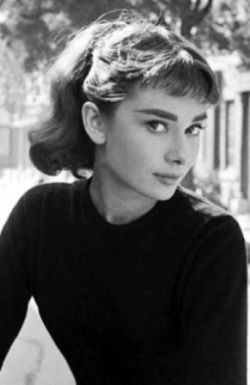 An elfin beauty that arose at the close of the golden age of Hollywood, Hepburn had aspects of both royalty and innocence. Her fame came from romantic comedies, where those qualities, and her nearly supernatural charisma could shine. Those attributes were muted in dramas, which made it harder for her to rise over the material, and much of her dramatic material left much to be desired: A Nun’s Story is poorly written and A Children’s Hour misses the point of the play. Then there is the romantic drama Green Mansions, which I do recommend as a film to watch while muttering “What the Hell.” (Really, it’s nuts.)
An elfin beauty that arose at the close of the golden age of Hollywood, Hepburn had aspects of both royalty and innocence. Her fame came from romantic comedies, where those qualities, and her nearly supernatural charisma could shine. Those attributes were muted in dramas, which made it harder for her to rise over the material, and much of her dramatic material left much to be desired: A Nun’s Story is poorly written and A Children’s Hour misses the point of the play. Then there is the romantic drama Green Mansions, which I do recommend as a film to watch while muttering “What the Hell.” (Really, it’s nuts.)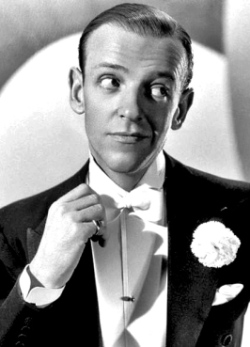 Fred Astaire is the king of cinematic dance. No one is even close. I’ve loved watching him dance all my life, though the movies he danced in didn’t always live up to his talents. But his finest are the cream of film musicals. Astaire is best known for his paring with Ginger Rogers. They made ten films together and changed the nature of dance on film. The top Astaire/Rogers films sparkled on three fronts: musical numbers, comedy, and a fantastical world. All three were very important to depression era audiences. Great dancing was always present in any Astaire film, but the comedy could be uneven. Strangely, it was neither of those, but the world building that split off the early films. In those, the two danced not in our world, but in an art deco paradise, beautiful and immaculate far beyond the dreams of reality. The lesser of the ten, such as The Story of Vernon and Irene Castle (1939) and The Barkleys of Broadway (1949) still had a Hollywood version of reality, but it wasn’t the marble dream of Top Hat and Shall We Dance.
Fred Astaire is the king of cinematic dance. No one is even close. I’ve loved watching him dance all my life, though the movies he danced in didn’t always live up to his talents. But his finest are the cream of film musicals. Astaire is best known for his paring with Ginger Rogers. They made ten films together and changed the nature of dance on film. The top Astaire/Rogers films sparkled on three fronts: musical numbers, comedy, and a fantastical world. All three were very important to depression era audiences. Great dancing was always present in any Astaire film, but the comedy could be uneven. Strangely, it was neither of those, but the world building that split off the early films. In those, the two danced not in our world, but in an art deco paradise, beautiful and immaculate far beyond the dreams of reality. The lesser of the ten, such as The Story of Vernon and Irene Castle (1939) and The Barkleys of Broadway (1949) still had a Hollywood version of reality, but it wasn’t the marble dream of Top Hat and Shall We Dance. Katharine Hepburn is known as one of the great actress of the golden age as well as a feminist icon. And she earned those reputations by many fantastic, meaningful, and politically relevant films. Unfortunately she made as many horrible and backward ones. Well, that happens, but for this list of her best, I’ll be avoiding the many dripping melodramas, sexist films, and her portrayal of a brave Chinese woman.
Katharine Hepburn is known as one of the great actress of the golden age as well as a feminist icon. And she earned those reputations by many fantastic, meaningful, and politically relevant films. Unfortunately she made as many horrible and backward ones. Well, that happens, but for this list of her best, I’ll be avoiding the many dripping melodramas, sexist films, and her portrayal of a brave Chinese woman.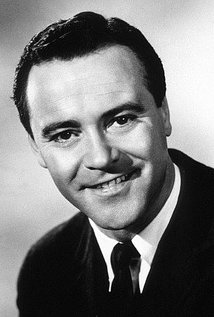 I made a list for
I made a list for 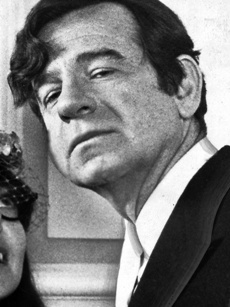 I watched the wonderful Hopscotch last night, which made me think of all the great Walter Matthau films and how likely it is that some of my friends haven’t seen them. Matthau’s film career started with him stuck in villain roles. For the gruff actor, that seems the natural fit, but it wasn’t. He was adequate in those roles, but didn’t stand out.
I watched the wonderful Hopscotch last night, which made me think of all the great Walter Matthau films and how likely it is that some of my friends haven’t seen them. Matthau’s film career started with him stuck in villain roles. For the gruff actor, that seems the natural fit, but it wasn’t. He was adequate in those roles, but didn’t stand out.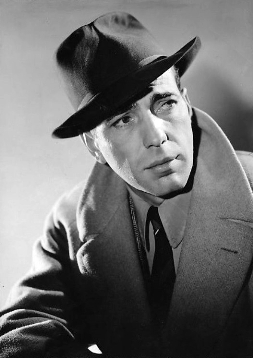 After a lackluster film day, I decided it was time to go to the best of the best. Bogart is the undisputed king of motion pictures. He is the greatest movie star of all time. Yes, he is a somewhat limited actor, and when he stretched, things could get weird (his effeminate, bunny-petting vampire in
After a lackluster film day, I decided it was time to go to the best of the best. Bogart is the undisputed king of motion pictures. He is the greatest movie star of all time. Yes, he is a somewhat limited actor, and when he stretched, things could get weird (his effeminate, bunny-petting vampire in 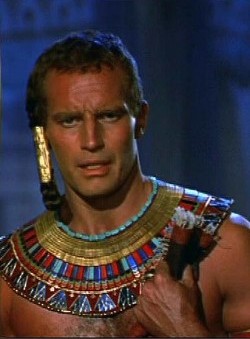 This one is by request.
This one is by request.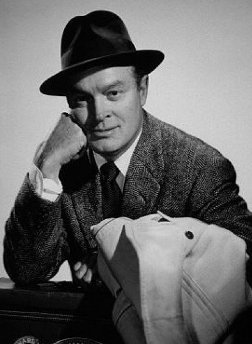 Sure, I’m still doing these–and one I was working on required some re-watching, so I went with Hope for today. Bob Hope was such a dominant comedian when I was a kid that is is bizarre to see how he is slipping from public consciousness. He also wan’t a very good comic when I was young, but he had been, years earlier. In the ’40s he was one of the best, producing a string of hysterical films. He’d been a stage and radio comic first, and that background was always with him. His routine was always verbal, and quick. His weak spot was one shared by many of the other comics and teams–he was repetitive. He always played more or less the same guy and did more or less the same jokes. They generally worked, but it makes a Hope marathon a bad idea. But then he had reason to keep doing the same thing–it worked, at least for a time. His better films tended to fall into three groupings: the Road pictures with Bing Crosby and Dorothy Lamour; the “My Favorite” pictures where he was mistaken for a spy or PI and got mixed up in espionage; his period costume comedies, which usually had people again mistaking him for someone important.
Sure, I’m still doing these–and one I was working on required some re-watching, so I went with Hope for today. Bob Hope was such a dominant comedian when I was a kid that is is bizarre to see how he is slipping from public consciousness. He also wan’t a very good comic when I was young, but he had been, years earlier. In the ’40s he was one of the best, producing a string of hysterical films. He’d been a stage and radio comic first, and that background was always with him. His routine was always verbal, and quick. His weak spot was one shared by many of the other comics and teams–he was repetitive. He always played more or less the same guy and did more or less the same jokes. They generally worked, but it makes a Hope marathon a bad idea. But then he had reason to keep doing the same thing–it worked, at least for a time. His better films tended to fall into three groupings: the Road pictures with Bing Crosby and Dorothy Lamour; the “My Favorite” pictures where he was mistaken for a spy or PI and got mixed up in espionage; his period costume comedies, which usually had people again mistaking him for someone important.